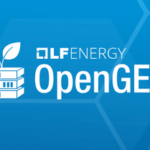
The OpenGEH Project is one of the many projects at LF Energy. We want to share about it here on the LF blog. This originally appeared on the LF Energy site.
OpenGEH ( GEH stands for Green Energy Hub ) enables fast, flexible settlement and hourly measurements of production and consumption of electricity. OpenGEH seeks to help utilities to onboard increased levels of renewables by reducing the administrative barriers of market-based coordination. By utilizing a modern DataHub, built on a modular and microservices architecture, OpenGEH is able to store billions of data points covering the entire workflow triggered by the production and consumption of electricity.
The ambition of OpenGEH is to use digitalization as a way to accelerate a market-driven transition towards a sustainable and efficient energy system. The platform provides a modern foundation for both new market participants and facilitates new business models through digital partnerships. The goal is to create access to relevant data and insights from the energy market and thereby accelerate the Energy Transition.
Initially built in partnership with Microsoft, Energinet (the Danish TSO) was seeking a critical leverage point to accelerate the Danish national commitment to 100% renewable energy in their electricity system by 2030. For most utilities, getting renewables onboard creates a technical challenge that also has choreography and administrative hurdles. Data becomes the mechanism that enables market coordination leading to increased decarbonization. The software was contributed to the LF Energy Foundation by Energinet.
Energinet sees open source and shared development as an opportunity to reduce the cost of software, while simultaneously increasing the quality and pace of development. It is an approach that they see gaining prominence in TSO cooperation. Energinet is not an IT company, and therefore does not sell systems, services, or operate other TSOs. Open source coupled with an intellectual property license that encourages collaboration, will insure that OpenGEH continues to improve, by encouraging a community of developers to add new features and functionality.
The Architectural Principles behind OpenGEH
By implementing Domain Driven Design, OpenGEH has divided the overall problem into smaller independent domains. This gives developers the possibility to only use the domains that are necessary to solve for the needed functionality. As the domains trigger events when data changes, the other domains listen on these events to have the most updated version of data.
The architecture supports open collaboration on smaller parts of OpenGEH. New domains can be added by contributors, to extend the OpenGEH’s functionality, when needed to accelerate the green transition.
The Green Energy Hub Domains
The Green Energy Hub system consists of two different types of domains:
A domain that is responsible for handling a subset of business processes.
A domain that is responsible for handling an internal part of the system (Like log accumulation, secret sharing or similar).
Below is a list of these domains, and the business flows they are responsible for.
Business Process Domains
Create metering point
Submission of master data – grid company
Close down metering point
Connection of metering point with status new
Change of settlement method
Disconnection and reconnecting of metering point
Meter management
Update production obligation
Request for service from grid company
Submission of calculated energy time series
Request for historical data
Request for calculated energy time series
Aggregation of wholesale services
Request for aggregated tariffs
Request for settlement basis
Submission of metered data for metering point
Send missing data log
Request for metered data for a metering point
Request for aggregated subscriptions or fees
Update subscription price list
Update fee price list
Update tariff price list
Request price list
Settlement master data for a metering point – subscription, fee and tariff links
Request for settlement master data for metering point
Change of supplier
End of supply
Managing an incorrect change of supplier
Move-in
Move-out
Incorrect move
Submission of customer master data by balance supplier
Initiate cancel change of supplier by customer
Change of supplier at short notice
Mandatory change of supplier for metering point
Submission of contact address from grid company
Change of BRP for energy supplier
Master data request
System Domains
Secrets handling
DataBricks workspace
Log accumulation for all domains
Messaging service for outbound messages
Authentication and routing
The post What is the OpenGEH (Green Energy Hub) Project appeared first on Linux.com.


0 Commentaires